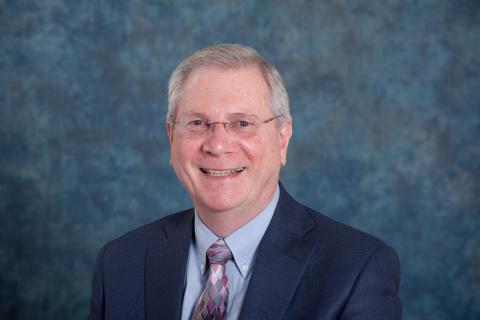For many years it has been recognized that nuclei in certain mass regions exhibit stable deformations, while those in other regions are essentially spherical. The shell model, an independent-particle model, has been used to explain the properties of spherical nuclei by assigning orbitals to each of the neutrons and protons of the nucleus. These orbitals are then filled in order of increasing energy, similar to the "aufbau" process in atoms. With this approach, it is possible to understand the exceptional stability of nuclei containing closed shells (or magic numbers), i.e., nuclei composed of 2, 8, 20, 28, 50, 82, and 126 neutrons or protons. In nuclei at or near closed shells, we are examining multiphonon vibrational excitations of quadrupole and octupole types.
Away from these closed shells, collective nuclear motions dominate over independent-particle modes. The best evidence for collective excitations is the rotational nuclear level structure observed for nuclei of the rare earth and actinide regions. Sequences of low-lying states closely obeying the quantum relationship for a rigid rotor occur and are reminiscent of the rotational levels known for diatomic molecules. For such open-shell nuclei, ample evidence has long been available to confirm that these nuclei have an intrinsic deformed shape. In measurements on deformed nuclei, we have sought to identify two-phonon states, to characterize "scissors mode" and "mixed-symmetry" excitations in which the neutrons and protons oscillate independently, and to search for other exotic modes.
In addition to searching for new degrees of freedom in nuclei, we have focussed on the complex transition between deformed and spherical shapes in our studies at the Accelerator Laboratory at the University of Kentucky. We have extensively utilized the inelastic neutron scattering (INS) reaction and gamma-ray emission spectroscopy to examine many nuclei. INS, coupled with detection of the de-exciting gamma rays, is distinctly superior to other nuclear reactions for the study of low-lying, low-spin nuclear states. With this method, we can obtain excellent sensitivity for observing weakly excited states, and the INS reaction is not restricted by spin and parity selection rules. We have developed methods for measuring short nuclear lifetimes with the Doppler-shift attenuation method, and gamma-gamma coincidence measurements are now performed routinely. We are currently exploiting these unique advantages to examine a variety of structural features of nuclei and to search for new, exotic nuclear modes.
Awards and Honors
- 1972-1973 Procter and Gamble Fellow
- 1981 University of Kentucky (UK) Research Foundation Award
- 1983 Student Affiliates of the American Chemical Society (SAACS) Teacher of the Year
- 1985 Chairman, Lexington Section of the American Chemical Society (ACS)
- 1987-1989 Councilor, Lexington Section of ACS
- 1992-1993 University Research Professor, UK
- 1992 Chancellor's Award for Outstanding Teaching, UK
- 1992 Chairman, Division of Nuclear Chemistry and Technology, ACS
- 1993-1994 Distinguished Professor of the College of Arts and Sciences, UK
- 1994 William B. Sturgill Award for Outstanding Contributions to Graduate Education, UK
- 1995-2003 Councilor, Division of Nuclear Chemistry and Technology, ACS
- 2002 Fellow of the International Union of Pure and Applied Chemistry (IUPAC)
- 2004-present Professor of Physics and Astronomy, UK
- 2005-2009 Chair, Department of Chemistry, UK
- 2006 Glenn T. Seaborg Award for Nuclear Chemistry, ACS
- 2008-2013 Councilor, Division of Nuclear Chemistry and Technology, ACS
- 2008-present Arts and Sciences Distinguished Professor, UK
- 2009 Fellow of the American Chemical Society, Member of the Inaugural Class of ACS Fellows
- 2010 Award in Recognition of Fifteen Years of Service on the Council of the American Chemical Society
- 2012 Southeastern Conference Academic Consortium (SECAC) Faculty Achievement Award, Inaugural UK Representative
- 2014-2015 Interim Chair, Department of Chemistry, UK
- 2016 Fellow of the American Physical Society
- 2018 W. Frank Kinard Distinguished Service Award, Division of Nuclear Chemistry and Technology, ACS
- 2022 Distinguished Service or Engagement Award, UK College of Arts & Sciences
Visiting Appointments
- NSF Undergraduate Research Fellow, Lawrence Berkeley Laboratory, summer 1967
- Visiting Scientist, Oak Ridge National Laboratory, summer 1976
- Gastwissenschaftler, Kernforschungsanlage Juelich, Germany, 1981-1982
- Participating Guest, Lawrence Livermore National Laboratory, 1984-2005
- Visiting Scientist, Lawrence Livermore National Laboratory, 1989-1990
- Guest Scientist and Visiting Professor, Los Alamos National Laboratory, 1997, 1998
- Visiting Scientist, TRIUMF, University of British Columbia, Canada, 2009-2010

